Home » Posts tagged 'John Jay College'
Tag Archives: John Jay College
Honoring the Legacy of Dr. Maureen Allwood
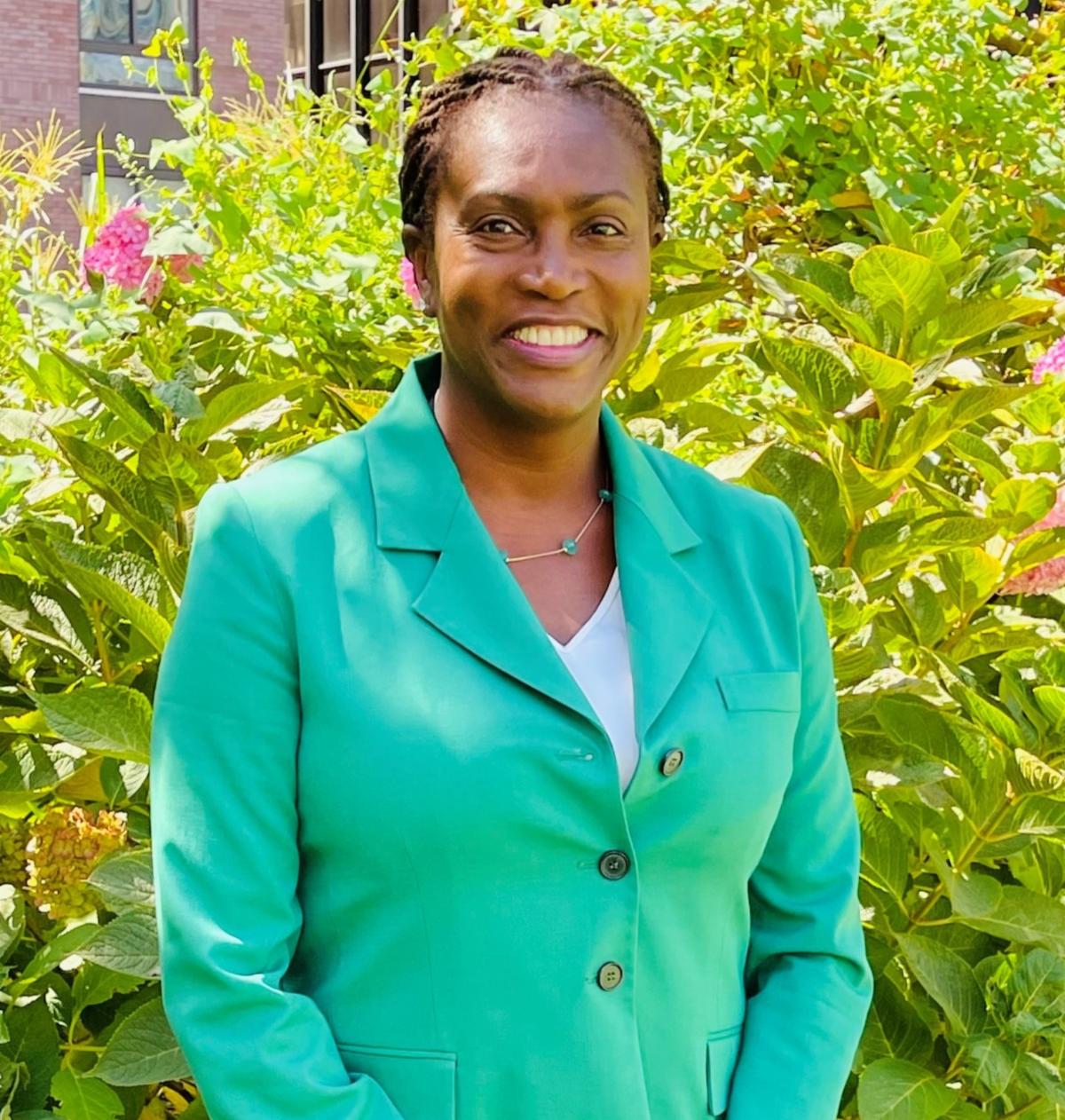
John Jay College staff in the Office for the Advancement of Research join the college community in mourning the passing of Dr. Maureen Allwood, a distinguished researcher, educator, advocate, and friend. Dr. Allwood’s sudden departure on Monday, March 4, in Providence, Rhode Island, has left a profound void in the hearts of those who knew her. Yet, her legacy of warmth, inspiration, and tireless dedication to marginalized communities will endure for generations.
A valued scholar in the field of psychology, Dr. Allwood’s work focused on understanding the developmental effects of trauma and violence, particularly emphasizing their disproportionate impacts on different sociodemographic groups. At John Jay College, she was a beacon of academic excellence and served as a professor of psychology since 2007. She also co-directed the department’s mentorship program for underrepresented and first-generation undergraduate students, leaving an indelible mark on the community with her passion and expertise. Her commitment to fostering diversity, equity, and inclusion within academia was unwavering, and her impact extended far beyond the classroom.
While grieving, her profound impact on the John Jay College community resonates deeply. Reflecting on her legacy, Dr. Angela Crossman, the Interim Dean of Faculty and Professor in the Department of Psychology where Dr. Allwood worked, aptly captured the sentiments of many, stating:
“Dr. Allwood’s passing was an incredible shock that is still difficult to fathom and is a tremendous loss to us all. She was a brilliant scholar, a passionate mentor and teacher, a dedicated and thoughtful colleague, and a warm and kind friend. I admired her greatly, appreciated the important work she was doing on the impact of trauma and violence exposure on youth development, and was always incredibly grateful that she chose to make John Jay her academic home. The world is a better place for her having been a part of it, and she will be deeply missed by her friends, family, colleagues, and students – students who will carry on her legacy of impactful and important scholarship conducted with integrity, rigor, and care.” said Dr. Crossman.
Beyond her scholarly pursuits, Dr. Allwood’s impact was deeply personal, touching the lives of students, colleagues, and friends alike. Professor Daryl Wout, Chair of the Psychology Department and Associate Professor of Psychology, emphasized her brilliance and passion to spearhead efforts to cultivate a more inclusive environment within our College and at the CUNY university level.
“Dr. Allwood was a beloved member of the John Jay community. She was an active department member and contributed to our students’ development and our clinical program’s growth. She fiercely advocated for an increased focus on diversity, equity, and inclusion (DEI) and spearheaded various DEI efforts at the college and university levels. Her research on the developmental effects of trauma and violence and their disproportionate impacts on different sociodemographic groups has significantly impacted our understanding of this important area. As a mentor, she was extremely supportive and nurturing of her students. She always prioritized her students and their success, even while on sabbatical. Beyond her impact at the College, she was a loyal friend, an exceptional mother, and a committed wife. As a community, we have been blessed by her presence and are deeply mourning her sudden death. She will forever be in our hearts and minds.” said Daryl Wout.
Reflecting on Dr. Allwood’s profound influence, Distinguished Professor Kevin Nadal wrote in his Instagram post, “She was a no-nonsense educator and mentor—someone who wanted her students to succeed while always encouraging them to work their hardest and never make excuses. She was an extraordinary colleague—one of the few humans who made an oppressive place like academia feel welcoming. SHE is what a professor looks like.”
Dr. Maureen Allwood received the 2023 OAR Scholarly Excellence Award winner, exemplifying a commitment to excellence, and has won several accolades and grants for the College. Her most recent groundbreaking study, “Youth Exposure to Gun, Knife, and Physical Assaults,” which examined PTSD symptoms across various demographic groups, was notably featured in Impact Magazine 2023 of the John Jay College of Criminal Justice. Her legacy, as showcased in Impact Magazine, serves as a testament to her enduring influence in shaping our understanding of critical societal issues.
As we honor Dr. Maureen Allwood’s memory, let us carry forward her excellence, compassion, and advocacy legacy. Though she may no longer be with us, her spirit will continue to inspire us to strive for a more just and equitable world.
New Faculty Spotlight Interview: Prof. Alessandra Early
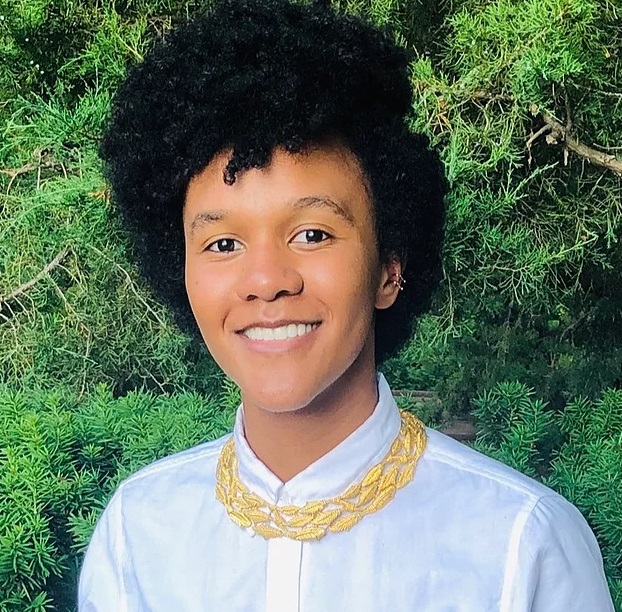
Professor Alessandra Early is an assistant professor of Criminal Justice at John Jay College and a dedicated criminologist whose academic journey is rooted in a passion for understanding the intricacies of human behavior and identity. From a childhood curiosity that questioned the fundamental nature of numbers to becoming a professor, her commitment to knowledge has been unwavering. With a background in psychology and sociology, she transitioned to criminology, driven by a fascination with the dynamics explored in shows like Criminal Minds.
Dr. Early’s research delves into the intersection of spatial dynamics, identity formation, and behavior, particularly focusing on queer experiences and the impact of social spaces. In this Q&A, Dr. Early shares her insights into research, professional achievements, mentoring philosophy, and her vision for contributing to the academic community.
Can you share a bit about your academic journey and what led you to pursue a career in criminology?
Since I was young, I’ve wanted to help people and investigate the “hows” and “whys” behind everything around me. As a kid learning math, I peppered my mother with questions incessantly, completely unsatisfied with the superficial and desperately seeking to learn a greater meaning. “Why is a one a one?” I asked. “What makes a two a two?” That pursuit of knowledge has become a core mission in my life and led me to become a professor today.
As an undergrad, I majored in psychology and sociology. I fantasized about becoming an FBI profiler thanks to my obsession with Criminal Minds, and I kept finding myself drawn to criminology courses. That tendency persisted when I pursued my master’s in sociology as well; I really connected with some professors who really believed in me and my work. I decided to follow that path and complete my PhD in criminology and criminal justice. (Though I moved away from law enforcement.)
Being a professor means I always have to adapt and evolve as new knowledge develops, which I love. I enjoy reading, learning, and problem-solving and my job asks me to engage in all three. Interacting with students is such a privilege because I want them to have the same light-bulb “Aha!” moments in my classrooms that I used to experience as a student myself.
Could you highlight some of your key research interests or projects, and how do you see them contributing to your field or broader society?
Broadly speaking, my research is rooted in three intersecting areas: Spatial and place-based dynamics, identity formation, and behavior. Specifically, I am interested in the ways in which spaces, particularly social spaces, impact how people understand themselves and can encourage or inhibit behavior. My dissertation, for example, explored how the historical, social, and cultural spatial dynamics of queer social spaces (such as bars and clubs), and using substances within them, can impact queer identities. One finding was that queer people strategically used substances to explore their identities and navigate queer vs. heterosexual social spaces.
Another project investigated the interplay between space(s), identities, and substance use through the experiences of primarily white heterosexual women who had experience with the rural methamphetamine market before being incarcerated. We emphasized the complex, violent, and empowering strategies that women used to confront and overcome gendered and sexualized expectations while participating within the patriarchal market.
My research interests engage in “queering” or destabilizing normative understandings of how we move through our environments, create meaning within them, formulate our identities in opposition to or with the help of those environments, and how those environments and the meanings we prescribe to them encourage or inhibit our behaviors.
Have there been any significant milestones or achievements in your professional journey that you are particularly proud of?
Currently, I’m most proud of my paper, The Role of Sex and Compulsory Heterosexuality Within the Rural Methamphetamine Market, which was published in Crime & Delinquency. Because of the precarious nature of grad school, sometimes it’s hard to see a project from inception to completion. To my and my co-author’s knowledge, this article represents the first paper to apply a queer criminological framework to examine the experiences of primarily cisgender and heterosexual white women. In 2022, the paper earned first place in the inaugural student paper award from the Division of Queer Criminology at the American Society of Criminology.
Do you have a mentoring philosophy, and how do you envision supporting students in their academic and professional development?
I approach teaching as a way to co-construct knowledge with students, with the goal of transforming the classroom into an encouraging space and making the material relatable and accessible. My mentoring philosophy builds upon that same foundation, emphasizing a collaborative and comfortable environment that I strive to offer all my mentees. I often describe my personal experiences with employing particular methodologies, concepts, or theories in order to demystify learning and the process of conducting research. In one-on-one student conversations and larger panel events, I speak candidly and transparently about the joys and challenges of being a Black queer woman in academia. While at conferences, I carve out time to bond with my mentees and ensure that I introduce them to fellow academics who share their interests to encourage networking and professional advancement. I let them know that my door is always open.
How do you envision contributing to the growth and development of our academic community in the coming years?
Although I have only spent a few months here at John Jay, I’m currently working to develop new courses that consider the ways in which queerness intersects with the carceral system and deepen our understanding of qualitative methodologies. I also look forward to carving out pathways that combine critical analyses and intersectional education.
Outside of academia, what are some of your hobbies or interests?
Outside of academia, you can find me practicing Matsubayashi Shorin-Ryu karate and Matayoshi Kobudo (traditional weapons). Currently, I am a Shodan (1st-degree black belt) and I am preparing for my Nidan (2nd-degree black belt) test in the fall of 2024! I’ve also recently rekindled my love for video games (after a long hiatus during graduate school) and I’m back to gaming with my friends!
If you could give one piece of advice to students aspiring to excel in your field, what would it be?
Throughout my educational career, I have always carried my grandmother’s mantra and work ethic, which is the best advice I’ve ever received: Good, better, best. Never let it rest until the good is better and the better is the best. Though I’d make one small amendment — rest is important! Be sure to take breaks, but keep those intellectual fires burning.
Back to the Lab with Dr. Jason Rauceo
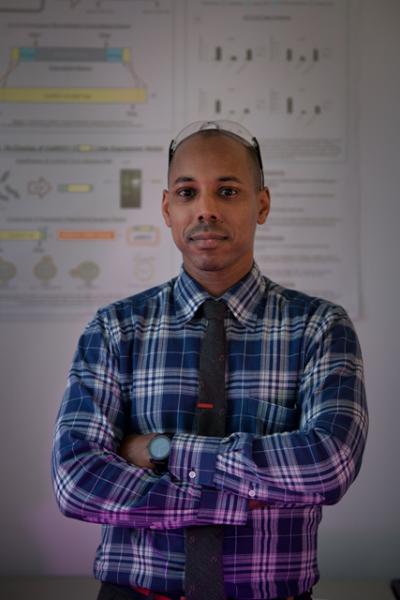
John Jay College, along with CUNY schools across the city, are moving toward the resumption of on-campus life. Classes are attended in-person, events are being planned, and professors and students alike are headed back into the laboratory. I talked to one of John Jay’s professors in the Department of Sciences, Dr. Jason Rauceo, to find out what it’s been like closing down and reopening his lab.
Dr. Rauceo is an Associate Professor of Biology whose research focuses on the major fungal pathogen Candida albicans. He is also the Director of the Cell and Molecular Biology major at John Jay. In 2021, Dr. Rauceo received a four-year grant from the National Institutes of Health to study the role of the mitochondrion in C. albicans’ ability to infect hosts and cause disease.
What was it like to get back to lab work after a significant time away during the early part of the pandemic? Did you have to change any protocols or make adjustments to your operating procedures?
Right before CUNY closed in March 2020, I shut the lab down with the expectation that I would not return for 6-12 months. I returned to campus in September 2020, and the major challenge was reopening the lab myself. Students were not allowed on campus, and I needed to calibrate several instruments that I had limited experience operating. Fortunately, my students were available via Zoom and FaceTime for assistance.
What does a typical day in the lab look like, if there is such a thing?
The day usually begins with a short one-to-one meeting with whomever is scheduled to perform an experiment, in which we mainly discuss logistics. Throughout the day, I periodically check in to assist and address any experimental issues if needed. At the end of the day, I inspect the lab to make sure that workspaces are cleaned, all reagents and supplies are properly stored, and all students have left the lab.
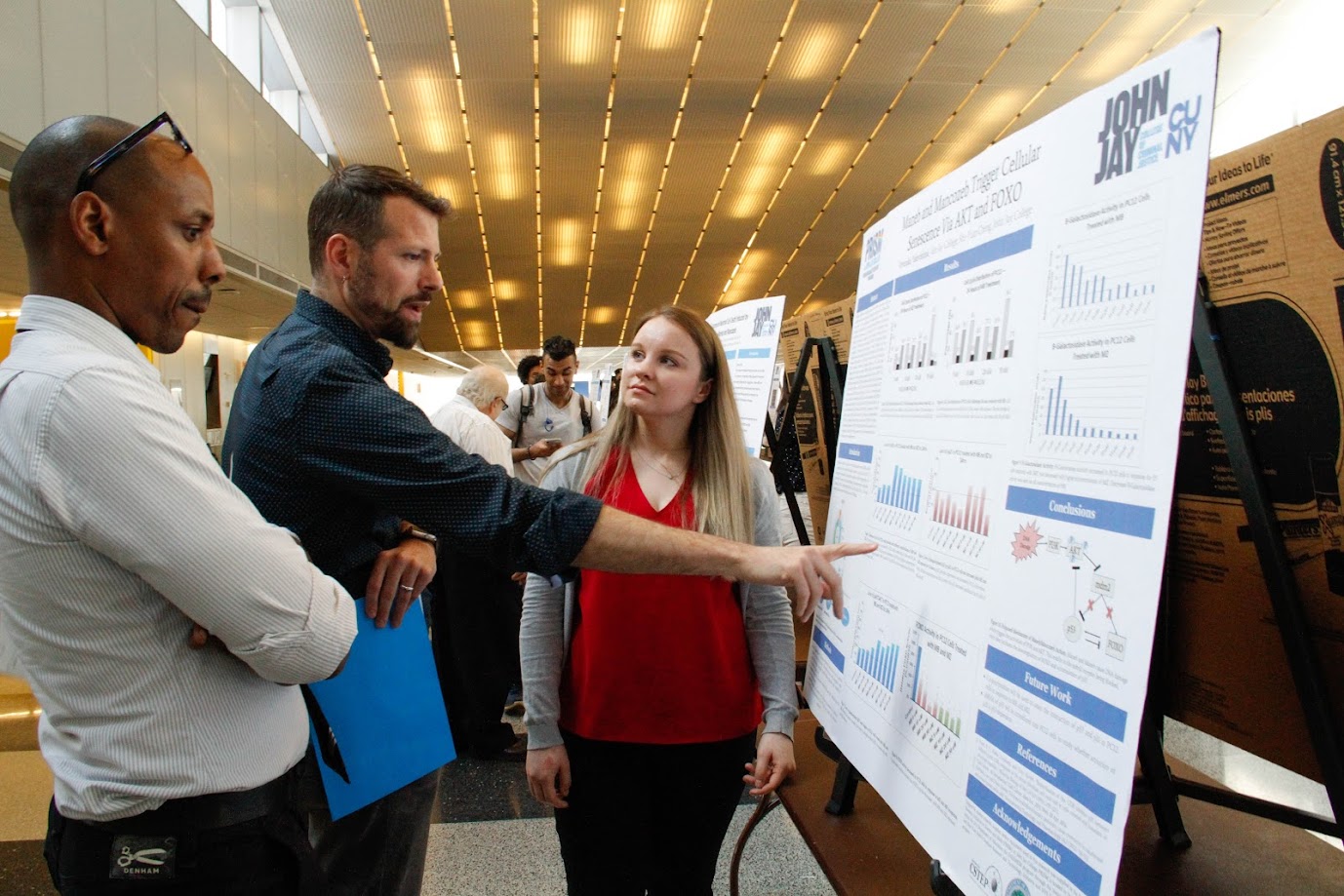
What function do students play in your lab?
Students perform the hands-on experimentation and data analysis, and are responsible for general lab maintenance. They also contribute to the development of their projects, which must be directly related to the lab agenda—in this case, C. albicans biology. Students may propose their own experiments for approval after approximately 1.5 to 2 years of experience in the lab.
You place a lot of emphasis on experiential-based learning. What does that mean in practice for your students?
I allow students to test their own hypotheses when safety and costs are not an issue. Also, I allow students to make their own errors during initial training exercises. I found that this approach in lab research builds confidence.
Generally, in the early stages of a new project, a significant amount of time is devoted to optimizing protocols to meet our objectives. During this “optimization phase” of the research, there is an extensive level of troubleshooting required, and a high level of error and ambiguity is observed. I found that a major payoff of experiential-based learning and training is that students propose unique approaches to addressing experimental obstacles.
Your study of SPFH (Stomatin, Prohibitin, Flotillin, HflK/HflC) proteins’ role in mitochondrial function in Candida albicans is being funded by the NIH. It seems that there are some exciting implications for developing antifungal treatments—can you tell me about that?
SPFH proteins are widely conserved in nature and are found in most living organisms. These proteins are important for major biological processes including, but not limited to, respiration, transport, and communication. Candida albicans is a fungus that resides in all humans on mucosal surfaces such as the mouth and gastrointestinal tract in a harmless state. However, changes in our immunity sometimes cause C. albicans infections. Immunocompromised individuals are highly susceptible to C. albicans infections.
Currently, the function of SPFH proteins is limited in C. albicans. We were the first research group to demonstrate that SPFH proteins are required when C. albicans is challenged with environmental stress. Our current proposal seeks to define the molecular function of SPFH proteins. We are collaborating with several prominent research groups in fungal biology and medicinal chemistry to determine the function of the SPFH proteins in mitochondrial function.
One of our project aims is to understand the effects of treating C. albicans with natural compounds that target SPFH proteins. Our initial findings are promising and may be useful in developing novel antifungal strategies.
The NIH award provided me with the funds to expand my lab operations, and I’ve recruited three new undergraduate students; therefore, I will be spending much of the next semester in student training and performing experiments.
Sewage and the Science of Public Health – Dr. Shu-Yuan Cheng and Dr. Marta Concheiro-Guisan Track Wastewater Contaminants

Wastewater is a topic that the average New Yorker doesn’t think about often, but perhaps we should. Sewage and run-off, over a billion gallons of which are treated every single day in New York City by 14 wastewater resource recovery facilities, are a valuable resource for scientists.
Wastewater sampling has been a useful tool for public health researchers tracking the COVID-19 pandemic over the last two years. The Centers for Disease Control (CDC) launched the National Wastewater Surveillance System in September 2020 as a means of tracking virus spread and community prevalence. Viral genetic material is transmitted in fecal matter to the sewers and waste treatment plants, where researchers can take samples. Their work can serve as an early warning of community spread, track variants, and inform public health strategies for responding to the virus. Even better, wastewater surveillance doesn’t require individuals to seek out healthcare in order to capture information, meaning that the resulting data can include people who may be asymptomatic, who have taken home tests, or who have not been tested at all.
Wastewater data have figured prominently in several interesting COVID-19 stories recently in the news. In January 2022 the CDC reported that mutations associated with the Omicron variant showed up in New York City wastewater in November 2021, before the variant was officially reported in South Africa and at least a week before the first U.S. case was identified via clinical testing, suggesting that Omicron was likely circulating in communities before cases could be officially confirmed. And The New York Times recently reported on mysterious fragments of viral RNA with novel mutations detected in NYC wastewater, which are stumping researchers. They haven’t been able to pin down where these fragments are coming from, nor why these mutations have not shown up in clinical testing of human or animal populations in the city.
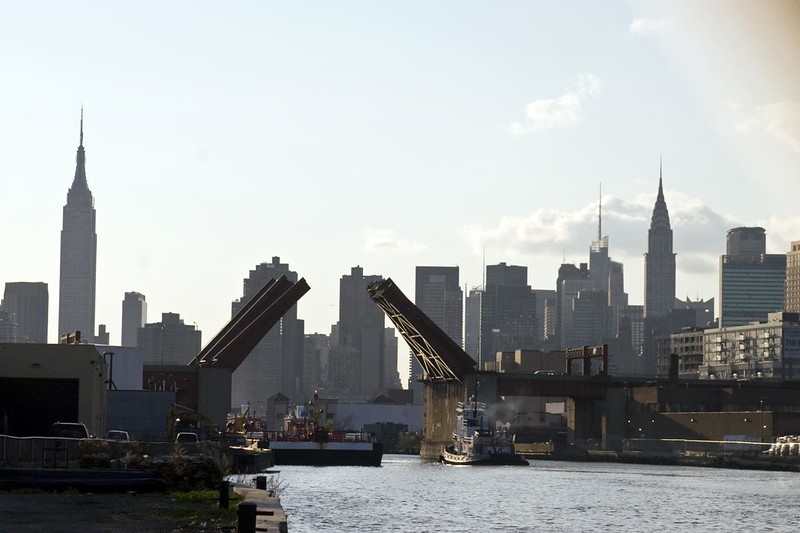
Two John Jay College researchers, Dr. Shu-Yuan Cheng and Dr. Marta Concheiro-Guisan, are also big proponents of wastewater sampling studies as a public health tool. Their own research, published in 2019, tracked drug use over one year in New York City, using one-time grab samples to test for levels of cocaine, nicotine, cannabis, opioids, and amphetamines in the sewage. Now, the scientists are collaborating with non-profits that test the health of the city’s waterways, trying to correlate levels of pharmaceuticals in our rivers with the amount of harmful bacteria.
To Dr. Cheng and Dr. Concheiro-Guisan, wastewater analysis’s great strength lies in early warning and early intervention. “It’s a great tool for prediction, for public health, crime fighting, and disease [prevention] purposes,” says Dr. Cheng. “The official report is often too late, but if you can do an early intervention, find the issue and start addressing it, there’s a lot you can do.”
“We looked at wastewater because we saw the utility,” says Dr. Concheiro-Guisan. “This is a different application [than viral tracking] but with the same thought: that what we eliminate from our bodies tells you a lot about your population.”
However, the United States is late to the game. Though the CDC has had results with its national COVID-19 tracking program, both researchers lament the lack of a centralized American body to apply this research to other public health applications. They’d like to see the U.S. follow the example set in European countries, China, Australia, and increasingly in South America, where governments have applied wastewater sampling to create campaigns warning their citizens about novel psychoactives, catch drug manufacturers, and more.
“It’s a very important public health tool that is showing results,” says Dr. Concheiro-Guisan. “If you start in the biggest city in the country, if you start in New York, then others will follow.”
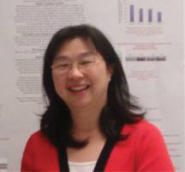 Dr. Shu-Yuan Cheng is an Associate Professor and Chair of John Jay’s Department of Sciences. Her research is in the areas of toxicology and forensic pharmacology, including the roles that environmental toxins play in neurodegenerative diseases, identifying the target genes and signaling pathways affected by environmental toxins, and investigating pharmacological mechanisms of anti-cancer medications.
Dr. Shu-Yuan Cheng is an Associate Professor and Chair of John Jay’s Department of Sciences. Her research is in the areas of toxicology and forensic pharmacology, including the roles that environmental toxins play in neurodegenerative diseases, identifying the target genes and signaling pathways affected by environmental toxins, and investigating pharmacological mechanisms of anti-cancer medications.
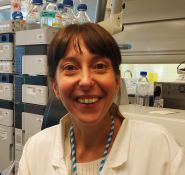 Dr. Marta Concheiro-Guisan is Assistant Professor of Forensic Toxicology in John Jay’s Department of Sciences. Her research focuses on the development and validation of analytical methods by gas and liquid chromatography tandem mass spectrometry and their application to different specimens, the detection of drug exposure during pregnancy, and the toxicological study of new psychoactive substances.
Dr. Marta Concheiro-Guisan is Assistant Professor of Forensic Toxicology in John Jay’s Department of Sciences. Her research focuses on the development and validation of analytical methods by gas and liquid chromatography tandem mass spectrometry and their application to different specimens, the detection of drug exposure during pregnancy, and the toxicological study of new psychoactive substances.
Critical Sociology At Work Around the Globe – David Brotherton and the Social Change Project
Dr. David Brotherton is in high demand. As founder and director of the Social Change and Transgressive Studies Project, a research project at John Jay, he leads grants that span multiple countries and touch subjects from post-release reintegration to immigration and the deportation pipeline. His long background and expertise in critical criminology and sociology have suited him to lead the varied types of prestigious grants the project obtains. Brotherton says that the work has three key points of overlap: “One part is to be able to transcend the academy, to translate your findings from the theory to what it actually means to people. Second, you’re doing work that immediately has an impact, to understand or respond to a social problem. And the third thing is to work with the underrepresented, the marginalized, and to help develop knowledge that goes back to them, to empower them.”
With a mission statement like that, how could the Social Change Project not have ended up at John Jay College? Founded in 2017, the organization almost lived at the CUNY Graduate Center; however, a set of happy accidents brought it to John Jay, where, co-directed by Brotherton and Professor of Sociology Dr. Jayne Mooney, it has been funded every year. Under the project’s umbrella live two working groups: the Social Anatomy of a Deportation Regime, a working group that focuses on “crimmigration” and the dynamics of border control and migrant detention, and the Critical Social History Project, which features Mooney’s work chronicling the history of incarceration in New York. Today, the Social Change Project is doing work with ramifications that will be felt all over the globe.
The Deportation Pipeline
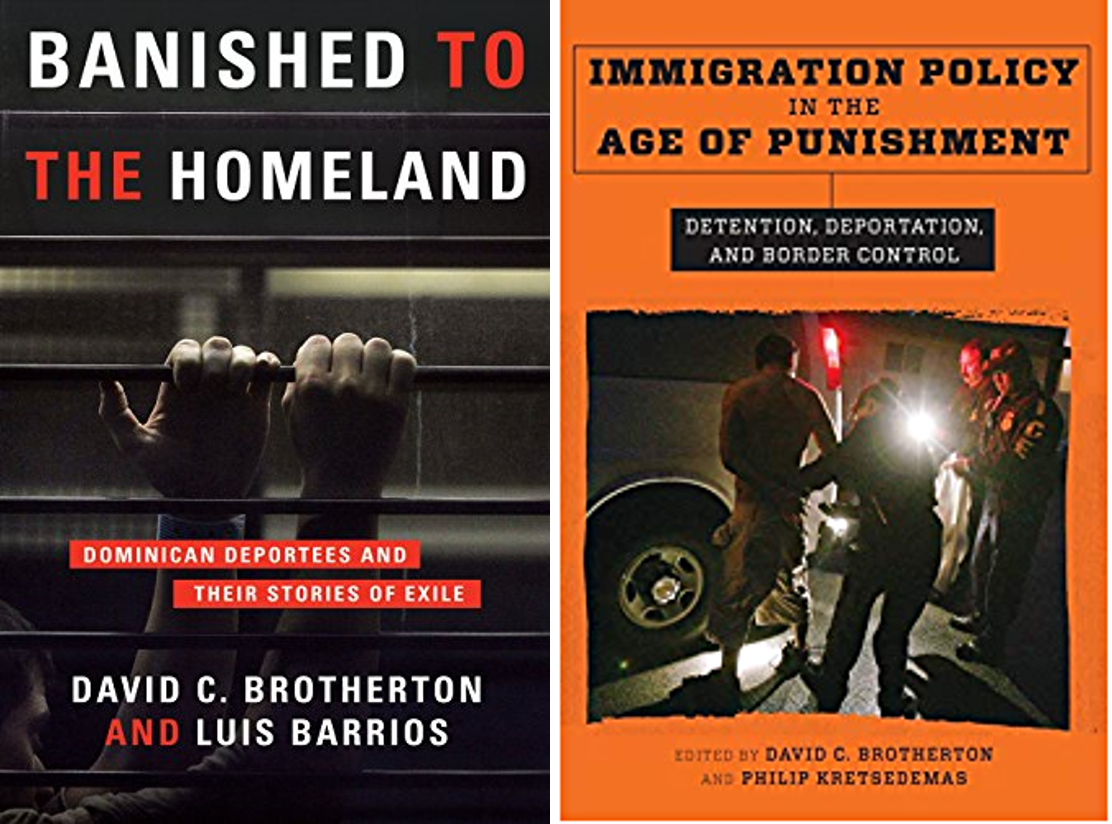 Growing up in a working class London neighborhood, Brotherton has always been interested in the day-to-day conditions and labelling faced by people just trying to get by. His first career in youth organizing and present career in sociology and criminology have a focus in common: applying knowledge to empower the disadvantaged. His background led him to research gangs and incarceration, which brought him to the place he is in today.
Growing up in a working class London neighborhood, Brotherton has always been interested in the day-to-day conditions and labelling faced by people just trying to get by. His first career in youth organizing and present career in sociology and criminology have a focus in common: applying knowledge to empower the disadvantaged. His background led him to research gangs and incarceration, which brought him to the place he is in today.
As he tells the story, Brotherton’s work with infamous gang organization the Latin Kings in New York brought him to the Dominican Republic in the early 2000s, where he was giving a talk on his project. “People didn’t want to know about the gangs, all they wanted to know was, why are you sending them all back here?” says Brotherton. “And I said, ‘I don’t know, but I’ll find out.’” That was the start of his investigations into transnational gangs and the issue of deportation, which at the time was not well-studied. That work has led to multiple grants and studies, books including Banished to the Homeland: Dominican Deportees and Their Stories of Exile and Immigration Policy in the Age of Punishment: Detention, Deportation, Border Control, and the evolution of the multinational TRANSGANG project in Europe, which he advises.
This spring, Brotherton’s project will be working with personnel from Rutgers, including John Jay College graduate Sarah Tosh, to kick off the Deportation Pipeline Project, funded by the National Science Foundation. The team will interview a variety of subjects – immigrants from the Dominican Republic, Jamaica, and Trinidad and Tobago, including some who have been detained for deportation hearings; lawyers; judges; and even ICE agents if possible – to understand the racialized “deportation pipeline” that runs through NYC back to the Caribbean, and the current situation these communities are living through under the Biden Administration.
“We need to understand all this, and then we’re going to be looking at all the texts that come down, the sanctions, all the laws. We know that Biden has said we’re going after criminal agents and gang members, which is just carrying on from Trump, but I thought we were supposed to have a new, more humane approach. So is it new wine in old bottles or are we going to get a real change in behavior? I don’t know.”
The two-year study will culminate in a book on the topic, as well as a conference with representatives from other municipalities. But Brotherton is already looking past the conclusion of the research to a potential comparative study in another large city or small town, to understand the dynamics of deportation in other American environments with similar demographics being targeted by immigration officials.
Critical Gang Studies
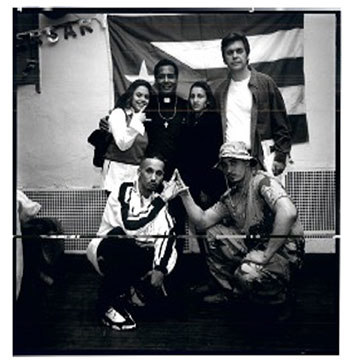
The Social Change Project is also looking forward to wrapping up several projects in the coming months. Since 2019, Brotherton has been consulting for the World Bank in El Salvador, developing national strategies for rehabilitation and reinsertion programs for formerly-incarcerated gang members in that country, which has the second-highest rate of imprisonment in the world after the United States. In April the project published a paper summarizing those findings, and expanding on them. “As we were writing this, we realized there is no real program for rehabilitation anywhere in Latin America, no probation, nothing like that,” says Brotherton. “Once you come out of prison, you’re on your own. So what we’re developing for El Salvador is really a model for the whole of Latin America.”
And July will see the publication of an edited volume, the Routledge International Handbook of Critical Gang Studies, which Brotherton edited along with Rafael Jose Gude, a Research Fellow at the Social Change Project. The book, which includes chapters by a number of CUNY faculty and graduates, will offer new perspectives on gang studies, placing them in the context of their political and social environments. According to Brotherton, it will cover perhaps 18 different countries and will be the largest handbook Routledge has ever released at nearly 900 pages long.
Incarceration and the Credible Messengers
Finally, Brotherton is working on a book on the Credible Messenger phenomenon, due out in 2022. The book, titled What’s Love Got To Do With It?: Credible Messengers and the Power of Transformative Mentoring, begins with a history of the now-widespread program, which recruits the formerly-incarcerated to intervene with young, at-risk kids from their neighborhoods, to keep them away from involvement with the criminal legal system. The book also incorporates qualitative research, including interviews with Messengers, kids, and administrators, as well as the currently incarcerated.
The Social Change Project and Brotherton himself are juggling many projects, each with many moving parts. But Brotherton relies on the connections he’s made over his career teaching at both John Jay and the CUNY Graduate Center, and doing research around the world, to keep the plates spinning. “It’s difficult,” he says. “Sometimes it gets overwhelming, but I always try to make sure I’ve got really good people in each project.”
At the end of the day, Brotherton is proud to be doing work that makes a difference for underserved, understudied communities that can face immense challenges. “I think the project carries on a rich tradition at John Jay. We’re following that tradition of socially conscious, critical social science.”
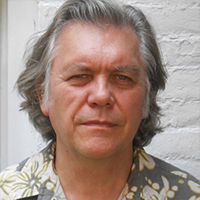 Dr. David Brotherton is a Professor of Sociology at John Jay College, and of Urban Education at the CUNY Graduate Center. His research focuses on gangs and globalization, immigration, and deportation and border control. He is the author of numerous books and articles, and has received grants from a variety of public and private agencies.
Dr. David Brotherton is a Professor of Sociology at John Jay College, and of Urban Education at the CUNY Graduate Center. His research focuses on gangs and globalization, immigration, and deportation and border control. He is the author of numerous books and articles, and has received grants from a variety of public and private agencies.
Frank Pezzella Wants Increased Accountability on Hate Crime Reporting
During the chaotic years of the Trump Administration, the United States experienced a rise in hate crimes. This increase has been confirmed by FBI data collection, media reporting, and independent scholarship. According to Dr. Frank Pezzella, an Associate Professor of Criminal Justice at John Jay College and a scholar of hate crimes, four out of the past five years, from 2015 to 2019, have seen consecutive increases in hate crime offending in this country, something he says is new. Nine of the ten largest American cities had the most dramatic increases in hate crimes – including New York City.
Hate crimes, or bias crimes, are strictly defined by the FBI. The organization sets out 14 indicators that must be present for a criminal offense to be classified as a hate or bias crime, that provide objective evidence that the crime was motivated by bias. But according to Dr. Pezzella, the evidence to meet those criteria isn’t always clear. Not every hate crime is as flagrant as the Pulse nightclub shooting in 2016 or the 2018 attack on Pittsburgh’s Tree of Life Synagogue. To establish a hate crime was committed, first responding police officers must look for evidence of bias motivation – what Pezzella calls an “elevated mens rea” requirement. But bias can only be committed against legally protected categories, like race and ethnicity, sexual or gender orientation, disability, or religion, which vary from state to state. And the additional paperwork and procedural requirements that come with classifying an incident as a hate crime are, in his words, disincentivizing police reporting.
Undercounting Hate Crimes
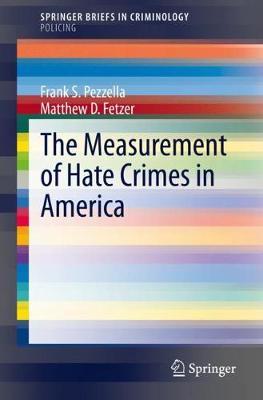 The result of these complications is rampant underreporting. In his new book, The Measurement of Hate Crimes in America, Dr. Pezzella looks at the reasons why hate crimes are so undercounted in the United States, and proposes some solutions for what law enforcement and policymakers can do to correct the issue. Since the enactment of the federal Hate Crimes Statistics Act in 1990, which required the Attorney General to collect data about hate crimes, the FBI has been fulfilling this mandate in the form of the Hate Crime Statistics Program, published annually as part of the Uniform Crime Report. According to Dr. Pezzella, since 1990 the UCR has reported an average of roughly 8,000 hate crimes per year; but victims, he says, report around 250,000 hate crimes per year. He attributes this substantial gap to a variety of factors including the evidentiary and procedural barriers noted above. In addition, only about 100,000 of these victimizations are ever reported to the police in the first place. And when victims do report, police departments are under no legal requirement to pass their findings on to the FBI.
The result of these complications is rampant underreporting. In his new book, The Measurement of Hate Crimes in America, Dr. Pezzella looks at the reasons why hate crimes are so undercounted in the United States, and proposes some solutions for what law enforcement and policymakers can do to correct the issue. Since the enactment of the federal Hate Crimes Statistics Act in 1990, which required the Attorney General to collect data about hate crimes, the FBI has been fulfilling this mandate in the form of the Hate Crime Statistics Program, published annually as part of the Uniform Crime Report. According to Dr. Pezzella, since 1990 the UCR has reported an average of roughly 8,000 hate crimes per year; but victims, he says, report around 250,000 hate crimes per year. He attributes this substantial gap to a variety of factors including the evidentiary and procedural barriers noted above. In addition, only about 100,000 of these victimizations are ever reported to the police in the first place. And when victims do report, police departments are under no legal requirement to pass their findings on to the FBI.
“Of the roughly 18,500 police departments, only maybe 75% participate in the Uniform Crime Report hate crime reporting program – note that it is voluntary,” says Pezzella. “So we don’t even know about hate crimes in 25% of precincts. And of the participating 75%, roughly 90% report zero hate crimes every year. So one of the reasons we wrote the book is that, either we don’t have hate crimes the way we think we do, or we have a systemic reporting problem.” It’s obvious which he believes is true.
The consequences of underreporting hate crimes are severe, Dr. Pezzella says. “To the extent that we underreport both the type and extent of victimization, it really does put a specific policy issue in front of us. We need to know who’s being affected, how they’re being affected, and the extent of the effect, in order to fashion remedies.” The only way to target treatment and services for the most vulnerable and likely victims is through accurate reporting.
Remedying Undercounting
In order to remedy undercounting and better target policy, Dr. Pezzella presents a number of recommendations in The Measurement of Hate Crimes in America. He calls for changes to take place within police departments, at the level of state and local politics, and in the criminal legal system. First, he suggests that every precinct have a written and clearly posted hate crime policy, and that every officer be trained to understand the rules for identifying bias crimes and the statutes governing them in their particular state. He would also like to see greater police-community engagement on this issue, with better tracking of non-criminal bias incidents – like seeing a swastika or other racist tag in the neighborhood – which Pezzella says often lead to violent bias crimes. He would especially like to see hate crime reporting made mandatory, with penalties or audits following a departmental report of zero bias crimes in a year.
Stepping out of police departments, Dr. Pezzella also calls for greater engagement from state and local politicians, who after all control the purse strings as well as set state legislation, but who are often hesitant to call attention to a problem with hate crimes in their district. Finally, he wants prosecutors’ offices to commit to seeking hate crime convictions, rather than settling for the easier task of convicting an offender for non-bias equivalents. With every actor across the board invested in tackling hate crimes and being transparent and proactive about applying best practices, offenders are put on notice that the community, including police, won’t allow these harmful crimes to continue.
Vicarious Victimization
Dr. Pezzella has been studying hate crimes since his graduate school years at SUNY-Albany, but he doesn’t feel he’s reached the end of this line of research. Going forward, he is interested in studying the deleterious and vicarious effects hate crimes can have on the victims’ communities. Because bias-motivated offenders target victims based on what they are rather than what they do, Dr. Pezzella says, there is a sense that anyone could become the next victim. This impersonal threat undermines societal ideals of trust and equality, and can even affect property values, as whole groups feel unsafe in certain areas and may be forced to relocate. Pezzella also mentions the psychological and emotional impacts of feeling under threat for simply being who and what you are. “When a victim goes home and says they were a victim of a hate crime, in what way does it impact the quality of life or sense of safety for secondary victims [i.e., the victim’s community]?” he asks. “What do they do? While we understand the direct impact, we know less about this vicarious impact, and how far it extends beyond the primary victim.”
He also has his eye on current events, especially the rise of domestic terrorism in the United States. Dr. Pezzella is concerned about the growing number of organized hate groups in recent years, and how emboldened they have been by rhetoric from the top levels of government. While many mass shootings have been categorized as domestic terrorism, Pezzella also sees evidence of bias that might categorize these events as hate crimes. If they are being left out of crucial counts that help to allocate resources and fight back against hate in this country, he wants to know.
 Dr. Frank Pezzella is an Associate Professor of Criminal Justice at John Jay College. His primary research focus is on the causes, correlates, and consequences of hate crimes victimizations. He also conducts research on issues that relate to race, crime and justice. In addition to his most recent book, he is also the author of Hate Crime Statutes: A Public Policy and Law Enforcement Dilemma, as well as numerous peer-reviewed articles.
Dr. Frank Pezzella is an Associate Professor of Criminal Justice at John Jay College. His primary research focus is on the causes, correlates, and consequences of hate crimes victimizations. He also conducts research on issues that relate to race, crime and justice. In addition to his most recent book, he is also the author of Hate Crime Statutes: A Public Policy and Law Enforcement Dilemma, as well as numerous peer-reviewed articles.
Richard Ocejo – Understanding Small City Gentrifiers
The outbreak of COVID-19 has accelerated a number of existing trends in the United States; along with giving a big boost to remote work and the digital economy, and reinforcing existing socioeconomic inequality, 2020 has also seen the trend of movement from big cities to smaller ones pick up. Whether because larger cities are too expensive or because COVID-19 made them feel not just dense but claustrophobic, residents have reconsidered their environments. While big cities like New York and San Francisco have seen their populations decline over the last five years, some smaller cities – with populations in the tens of thousands rather than the millions – have been seeing an upswing.
Dr. Richard Ocejo, a John Jay professor, sociologist and author, is interested in what it looks like when newcomers arrive in small cities. He’s using Newburgh, New York, a city of about 30,000 in the middle of the Hudson Valley, as a case study, spending time with new and old residents to learn what gentrification looks like in a smaller city. “Newburgh was totally abandoned,” says Ocejo. “Capital had left it, investment had left it, it was just a place to warehouse the poor and struggling. Until New York City became too expensive, then all of a sudden, small, affordable, historic places like Newburgh become valuable again, to a group of people who are looking for these urban lifestyles.”
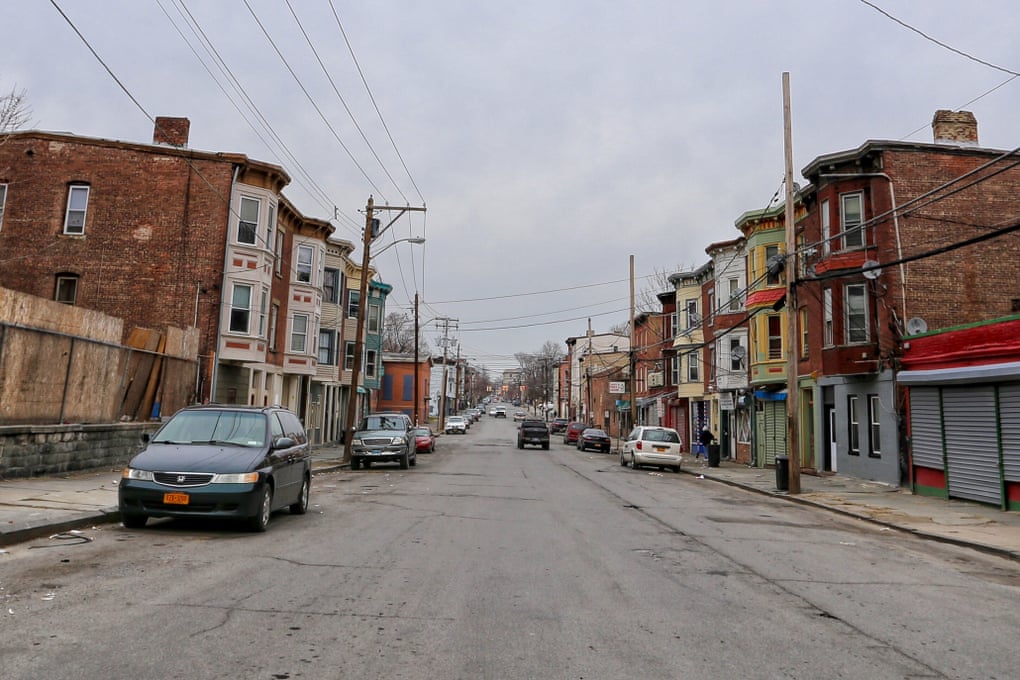
Gentrifying a Small City
Ocejo sees the characteristics of small-city gentrifiers as distinct from those who have traditionally moved into gentrifying neighborhoods in New York City, like on the Lower East Side or in Brooklyn. People moving to small cities from places like New York are often middle class, mid-career professionals, who are looking to buy property more affordably while still maintaining the lifestyles and habits they developed in the big city. Over the course of several years of field work and interviews, Ocejo has pinpointed some common threads in the narratives Newburgh’s newest residents use to understand their actions.
“They recognize that the reason they left [New York City] was because of being priced out. But when they get to Newburgh, the understanding of what it’s like to not be able to afford a place any more, of having to leave one’s home as a consequence of these larger forces beyond your control, doesn’t resonate in how they understand gentrification as they are perpetuating it in this small city,” says Ocejo. “They don’t see what they’re doing there as gentrifying that will cause this sort of harm that could make somebody leave their home as they had to do. Instead they say, we’ll just do it better.”
Generally, Newburgh’s gentrifiers are opposed to harmful development by “slumlords” or “bad actors;” in contrast, they perceive themselves as providing employment and adding to the tax base. But Ocejo hasn’t seen concrete evidence to back up their narratives. “I don’t know many examples of what we can call a successful gentrification, at least not at any kind of scale,” says Ocejo. “I can’t think of any examples of an equitable integration where there aren’t tensions and conflicts that take place.”
Reckoning with Racism
Ocejo says that some of the challenges he sees playing out in Newburgh are tied into structural racism and the failure of newcomers to acknowledge that they are recreating harmful racial and economic dynamics in Newburgh that caused displacement in New York City. While he observed Newburgh’s newcomers participating in Black Lives Matter protests and marches, he says that the leap to understanding the racist structures that are tied up in gentrification is rarely made. “We don’t talk about gentrification as a racial process,” Ocejo says, “but it is. It’s this extraction of value from racialized spaces, non-white spaces that are taken advantage of through these processes. And that’s not discussed at all.” He says gentrifiers’ inability or unwillingness to confront these issues is exacerbating a key inequality at the heart of the process.
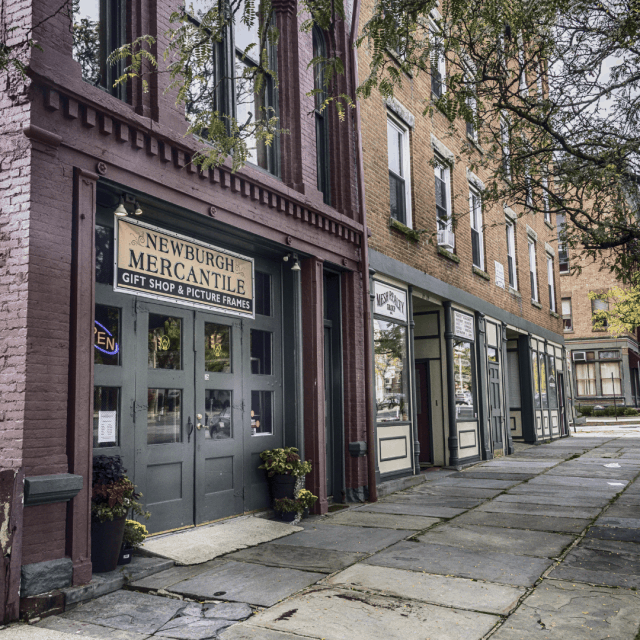
Gentrifying “Better?”
Ocejo does clarify that, although on the whole gentrified spaces tend to end up segregated socially and culturally, there are positives associated with the process. Smaller cities are crying out for even a fraction of the investment New York City has received and, done correctly, municipal revitalization can make a real difference to disadvantaged communities. And in interviews with existing Newburgh residents, he has generally heard people react positively to commercial development in their neighborhoods. However, they aren’t necessarily sure the changes will add up to much real change in their own lives.
“Gentrification is a consequence of much larger forces that are beyond anybody’s control,” says Ocejo. Newburgh’s population of gentrifiers are responding to market forces that are making New York City a difficult place to live long-term without making significant sacrifices or acquiring millions of dollars. But at the end of the day, some groups have the means to make choices about where they will live and whether they will stay or go, while others are unable to make the same choices. It will take structural, policy-based change to make gentrifying urban neighborhoods, and migration in general, more equitable.
Dr. Ocejo has published three papers related to his work in Newburgh and has two additional papers under review. He is also working on the manuscript of a book that will bring together all of his work on this project; he expects it to come out in 2022 or 2023.
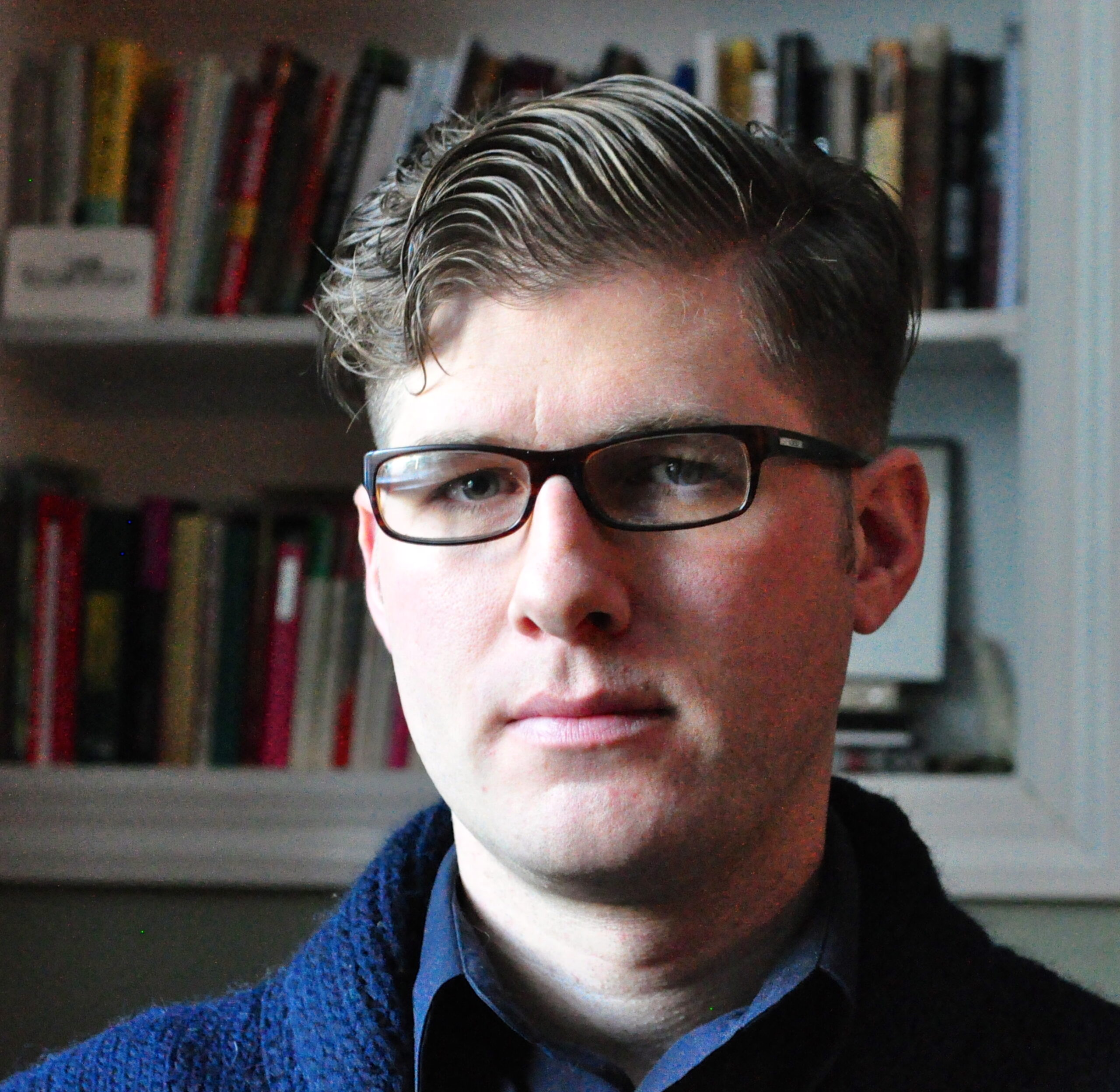 Dr. Richard Ocejo is an Associate Professor of Sociology at John Jay College, and the Director of the MA Program in International Migration Studies at the Graduate Center of CUNY. His research, which has been published in a variety of journals including Journal of Urban Affairs, Sociological Perspectives, and more, focuses on cities, culture and work. He uses primarily qualitative methods in his scholarship. Dr. Ocejo is the author of two books: Masters of Craft: Old Jobs in the New Urban Economy (2017) – on the transformation of manual labor occupations like butchering and bartending into elite occupations – and Upscaling Downtown: From Bowery Saloons to Cocktail Bars in New York City (2014) – about the influence of commercial operations on gentrification and community institutions in downtown Manhattan.
Dr. Richard Ocejo is an Associate Professor of Sociology at John Jay College, and the Director of the MA Program in International Migration Studies at the Graduate Center of CUNY. His research, which has been published in a variety of journals including Journal of Urban Affairs, Sociological Perspectives, and more, focuses on cities, culture and work. He uses primarily qualitative methods in his scholarship. Dr. Ocejo is the author of two books: Masters of Craft: Old Jobs in the New Urban Economy (2017) – on the transformation of manual labor occupations like butchering and bartending into elite occupations – and Upscaling Downtown: From Bowery Saloons to Cocktail Bars in New York City (2014) – about the influence of commercial operations on gentrification and community institutions in downtown Manhattan.
Muath Obaidat Proposes a Better, Safer Way to “Log-In”
 Have you ever been faced with a photo grid and asked to click on every traffic light to prove you weren’t a robot before your could access your email or bank? A recent proposal by Dr. Muath Obaidat, an Assistant Professor in John Jay College’s Department of Mathematics and Computer Science, could prevent you from having to go through that ever again.
Have you ever been faced with a photo grid and asked to click on every traffic light to prove you weren’t a robot before your could access your email or bank? A recent proposal by Dr. Muath Obaidat, an Assistant Professor in John Jay College’s Department of Mathematics and Computer Science, could prevent you from having to go through that ever again.
Along with co-authors including his student Joseph Brown (a 2020 graduate who earlier this year was awarded John Jay’s Ruth S. Lefkowitz Mathematics Prize), Dr. Obaidat makes the case for a new way of authenticating user information that would make logging into websites more secure without overcomplicating the system. He calls it “a step forward” both technically and logistically, as the proposed authentication system is both technically more secure and easier to deploy commercially than previous proposals. So while Obaidat’s research may seem complicated, the solution he proposes in “A Hybrid Dynamic Encryption Scheme for Multi-Factor Verification: A Novel Paradigm for Remote Authentication” (Sensors, July 2020) is not just theoretical.
(To read the full text of the article for free, visit https://www.mdpi.com/1424-8220/20/15/4212/htm)
Read on for a Q&A with Dr. Muath Obaidat:
Can you describe the most common risks of the typical username/password authentication model most of us are using today?
The most common risk in current authentication models is the lack of presentation of actual proof of identity, especially during communications. Since the majority of websites use static usernames and passwords that do not change between sessions, if an attacker can get ahold of a login — whether by guessing or through more technical means — there is no further mechanism or nuance in design to actually stop them from using stolen data to imitate a user. While 2FA (Two Factor Authentication) has risen in popularity as a mitigation for this problem, both published papers from the National Institute of Standards and Technology (NIST) as well as high profile public hacks have shown this to be insufficient by itself, because of attacks which focus on manipulating or stealing data rather than simply brute-forcing (working through all possible combinations through trial-and-error to crack a passcode).
Can you explain how your proposed method works to authenticate a session?
The simplest way to explain how this form of authentication works is to imagine you had a key split into two halves; the client has a half, and the server has a half. But instead of just sending the half of the key you have, you’re sending the blueprint for said key half, which can only be reconstructed given the other half. This blueprint changes slightly each time you log in, but is still derivative of the other “whole” key.
Only two people have the respective halves: the client and the server. These halves are derivative of data which is itself derived from an original input. Thus, as long as you can produce something from the front-end that creates one input, even though this input is never sent, it can be integrated with this system. Think of that as the “mold” from which the key is derived, and then the blueprint is shifted on both ends according to the original mold.
How does your proposed scheme differ from others that have been in use or proposed previously?
What sets it apart is both the flexibility of the design as well as the range of problems it attempts to fix at one time. Many other schemes we studied were focused on fixing one problem: typically [they focused on] brute-forcing, which manifested in the form of padding “front-end” or “back-end” parts of a scheme without giving much thought to the actual transmission of data itself. Our scheme, on the other hand, is focused on protecting that transmitted data, while also being sure not to introduce additional weaknesses on either end of the communication.
Another big issue we often ran into with other schemes is design flexibility; many were either unrealistic to implement en masse, or were so specific that they pigeonholed themselves into a scenario where they could not be combined with other communication systems or improvements to other architectural traits. Our scheme is flexible in terms of architectural integration — for example, it uses the same simple Client-Server framework without introducing third parties or other nodes — and the overall design is both simplistic in terms of implementation and highly adaptable.
What is it that has prevented many newly-proposed authentication schemes from being implemented more broadly?
While it depends on the scheme in question, there are typically three factors that are preventative to implementation: user accessibility, deployment complications, and degree of benefit. The first isn’t really technical, but relates more to consumer factors. Many schemes simply are not widely implementable on a consumer level; not only because of aspects such as speed, but also because of logistics. Having a user go through a complicated process each time they want to log into a website isn’t very practical, especially if you’re selling a product where convenience is a factor, hence why some schemes don’t catch on despite being technically sound.
Deployment complications, on the other hand, would be related to things such as how to replace current infrastructure with new infrastructure; many schemes significantly stagger architectures or are high specific and complex to actually deploy. These complications act as a deterrent to those who may want to implement them. Lastly, degree of benefit is a big factor too. Given how ubiquitous current paradigms are, simply improving one aspect in exchange for the implementation of a widely different system is a very big ask. Implementation takes time, as does adoption on a wide scale, so unless the benefit is [significant enough to merit departing from] current paradigms, it’s unlikely many would want to explore “unproven” adoptions.
How would a new authentication method go from being theoretical to being widely adopted? In other words, by what process is this type of new technology adopted, and who is responsible for its uptake?
That’s a good question, and I do not think there is a singular answer unfortunately. Especially because of the decentralization of the internet, it’s hard to give a specific answer on what this would look like in practice. As the internet has been more consolidated under specific companies, I suppose one answer to this would be that bigger companies would have to take an interest in implementation and take action themselves to create a ripple effect. This is distinct from the past, when collective normalization of technology was bottom-up because of more decentralized standards.
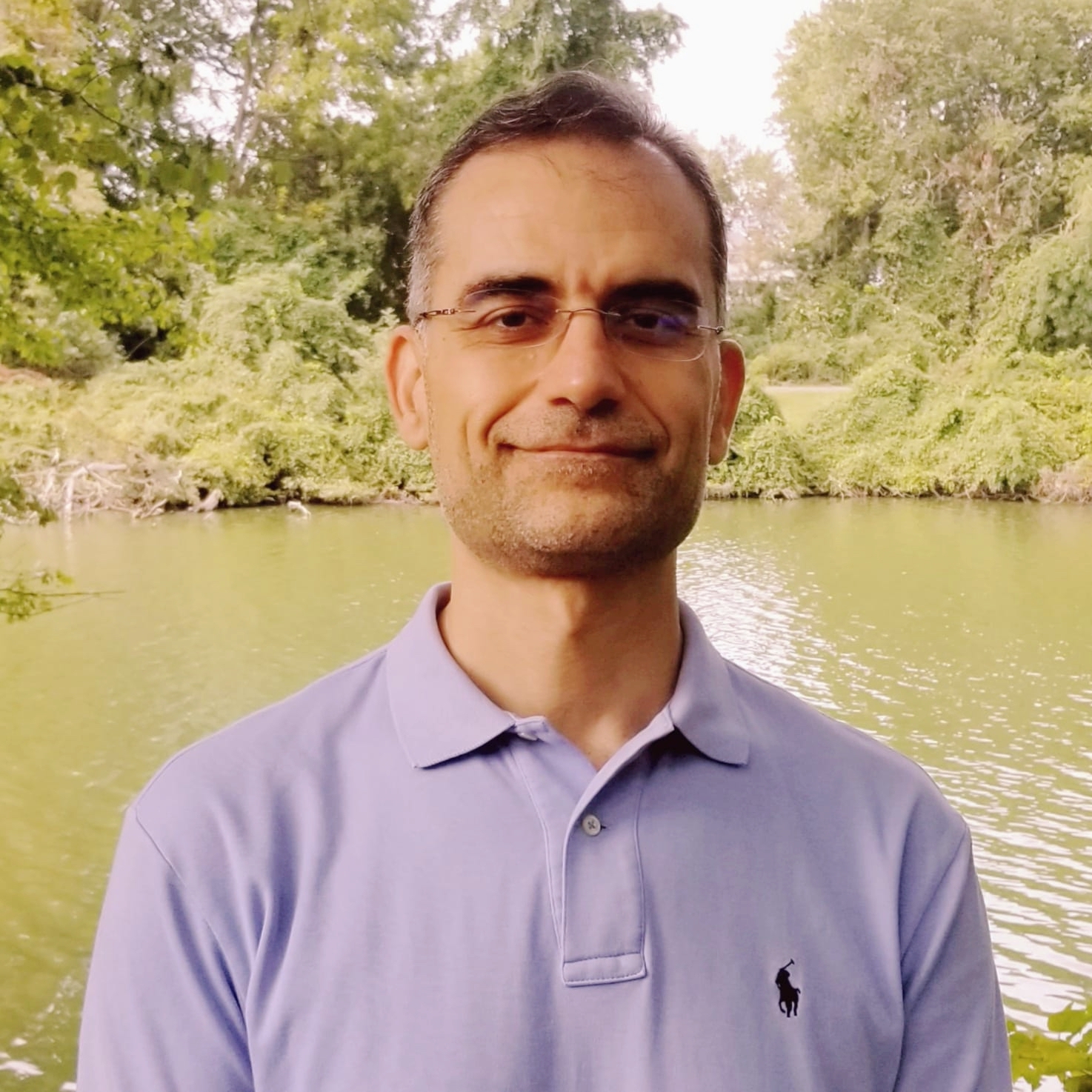
Dr. Muath Obaidat is an Assistant Professor of Computer Science and Information Security at John Jay College of Criminal Justice of the City University of New York and a member of the Center for Cybercrime Studies, Graduate Faculty in the Master of Science Digital Forensics and Cyber Security program and Doctoral faculty of the Computer Science Department at the Graduate School and University Center of CUNY.
He has numerous scientific article publications in journals and respected conference proceedings. His research interests lie in the area of digital forensics, ubiquitous Internet of Things (IoT) security and privacy. His recent research crosscuts the areas wireless network protocols, cloud computing and security.
Racial Justice Research and Practice Dialogues 2020-23
The Office for Academic Affairs through its Office for the Advancement of Research, in collaboration with Undergraduate Studies and a faculty leadership committee representing Africana Studies (Jessica Gordon-Nembhard), Latinx Studies (José Luis Morín), and SEEK (Monika Son), sponsored a year-long community dialogue on racial justice research and scholarship across the disciplines. John Jay College faculty, students, and the broader community were invited to join four panel discussions and four hands-on workshops that invited a more in-depth discussion about changing the ways we teach and learn – specifically, by facilitating meaningful engagement with scholarship by and about people of color, and promoting the incorporation of research on structural inequities into curriculum college-wide. Over the course of the 2020-2021 academic year, events covered multi-dimensional topics including:
- racial disparities in health and mental health and trauma-informed pedagogy;
- the erasure of people of color from the historical narrative;
- economic inequality; and
- racism and discrimination in the criminal legal system.
Each panel was facilitated by a John Jay faculty member who also led a follow-up workshop intended to engage participants more deeply in the subject matter and promote best practices for cultivating racial justice in our classrooms and around the college. Each panel was recorded, and the recordings can be found below, as well as resource guides for further self-guided learning and curricular reform.
Series events, recordings and resources
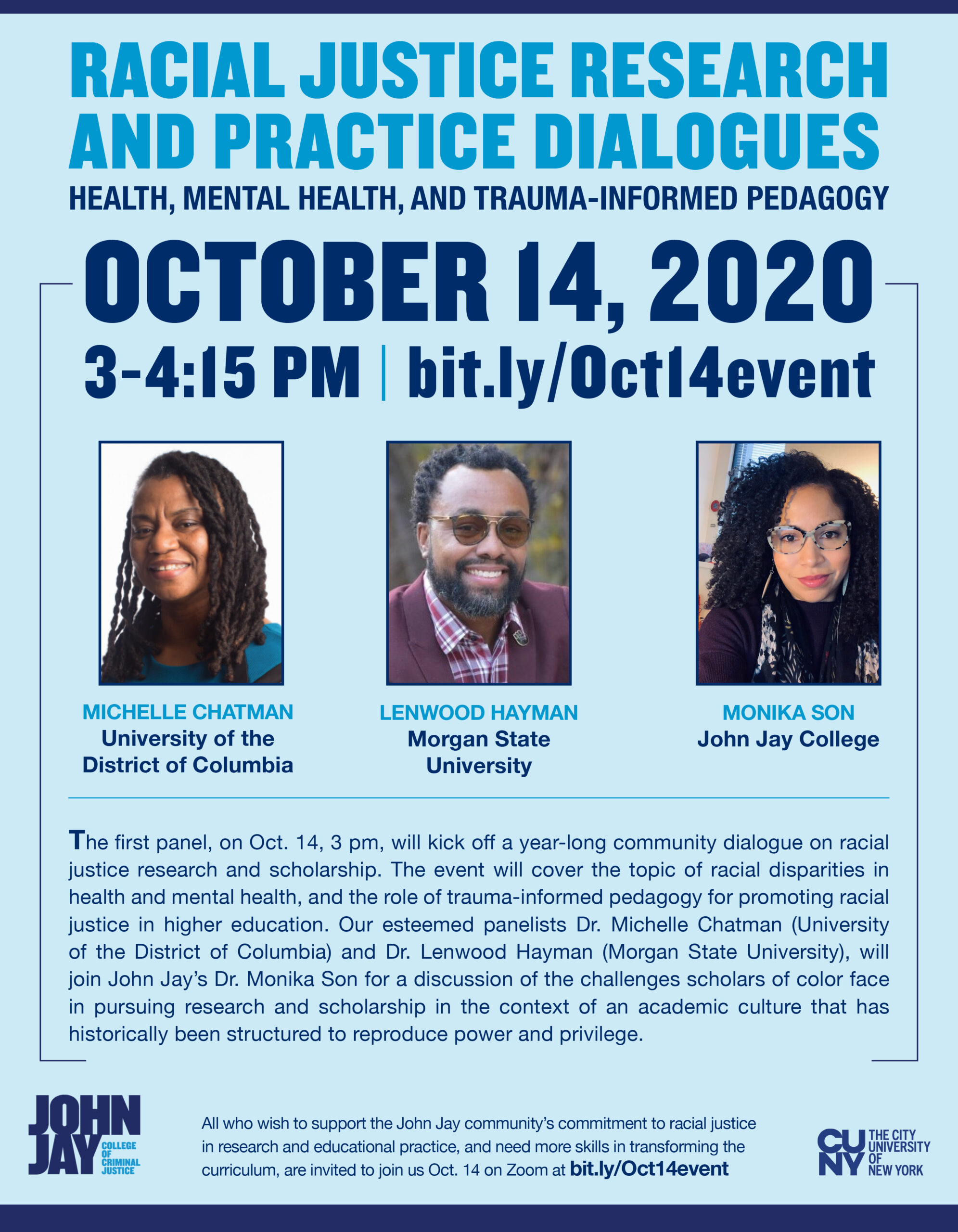 Event #1: Health, Mental Health, and Trauma-Informed Pedagogy
Event #1: Health, Mental Health, and Trauma-Informed Pedagogy
Panelists: Dr. Michelle Chatman (UDC) & Dr. Lenwood Hayman (Morgan State University)
Facilitator: Dr. Monika Son (JJC)
Event recording: https://youtu.be/NYTxARHOALw
Resources:
- Ayers, W., Ladson-Billings, G., & Michie, G. (2008). City kids, city schools: More reports from the front row. The New Press. Introduction, pgs 3-7.
- Chatman, MC. (2019). Advancing Black Youth Justice and Healing through Contemplative Practices and African Spiritual Wisdom. The Journal of Contemplative Inquiry, 6(1):27-46.
- Monzó, L. D., & SooHoo, S. (2014). Translating the academy: Learning the racialized languages of academia. Journal of Diversity in Higher Education, 7(3), 147–165. DOI: 10.1037/a0037400
- Yolanda Sealey-Ruiz, Arch of Self, LLC, https://www.yolandasealeyruiz.com/archaeology-of-self
For additional suggested readings, prompts for discussion, and curricular resources, download our full event guide: RJD Event 1.1 Homework and Readings.

Event #2: Race and Historical Narrative — Correcting the Erasure of People of Color
The second panel in the OAR/UGS Racial Justice Research and Practice Dialogues series, on November 11 at 3 pm, will shine a light on the erasure of people of color from the historical narrative commonly taught in the United States. This erasure is harmful to students of color in particular, as they do not see themselves represented in the stories told about this country, and actively harms people of all races by failing to present an accurate picture of the country’s founding and history.
Panelists: Dr. Paul Ortiz (UFL) & Dr. Suzanne Oboler (John Jay College)
Facilitator: Dr. Edward Paulino (John Jay College)
Event recording: https://youtu.be/WRIDHIA_a94
Resources: For suggested readings that may be helpful in placing the panel discussion in context, download the RJD Event 2.1 – Readings.
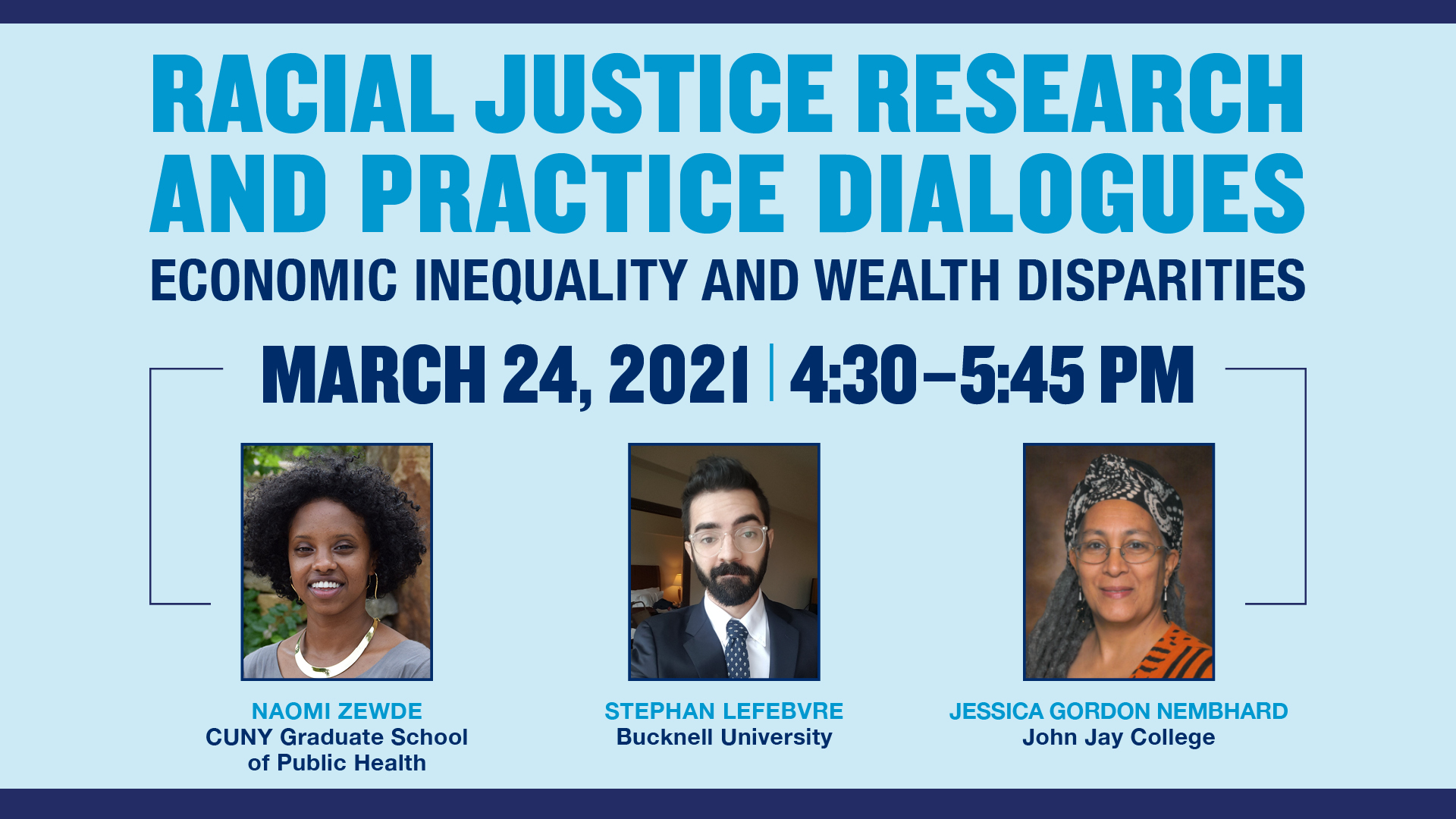
Event #3: Economic Inequality and Wealth Disparities
Panel Discussion – March 24, 2021, 4:30 – 5:45 pm
Panelists: Dr. Naomi Zewde (CUNY SPH) & Dr. Stephan Lefebvre (Bucknell University)
Facilitator: Dr. Jessica Gordon Nembhard (JJC)
Event Recording: https://youtu.be/_lp93i3EHqE
Resources: For suggested readings that may be helpful in placing the panel discussion in context, download the Racial Justice Dialogues – Economic Inequalities – Resources.
 Event #4: Racism in the Criminal Legal System
Event #4: Racism in the Criminal Legal System
Panel Discussion – April 21, 2021, 3 – 4:15 pm
Panelists: Dr. Jasmine Syedullah (Vassar College) & Professor César Cuauhtémoc García Hernández (University of Denver, Sturm College of Law)
Facilitator: Professor José Luis Morín (JJC)
Recording: https://youtu.be/OZ8N-c7Gob0
Resources: For suggested readings that may be helpful in placing the panel discussion in context, download the Racial Justice Dialogues – Resources – Racism in the Criminal Legal System
The series continued in academic year 2021-2022, expanding the scope of the discussions with panels on racial equity in disaster recovery.
 Event #5: Racial Equity in Community Recovery: CBOs, NGOs, and Government Collaboration
Event #5: Racial Equity in Community Recovery: CBOs, NGOs, and Government Collaboration
The fifth panel took place on November 1, 2021, and addressed the interdependent roles of government agencies, community-based and non-governmental organizations in promoting or hindering equitable outcomes in post-disaster situations. Panelists included Kim Burgo (Catholic Charities), Craig Fugate (One Concern), Dr. Jason Rivera (Buffalo State College), Dr. Warren Eller (John Jay College), and Dr. Dara Byrne (John Jay College). Find the recording at https://www.youtube.com/watch?v=LQkjxw6RcKg.
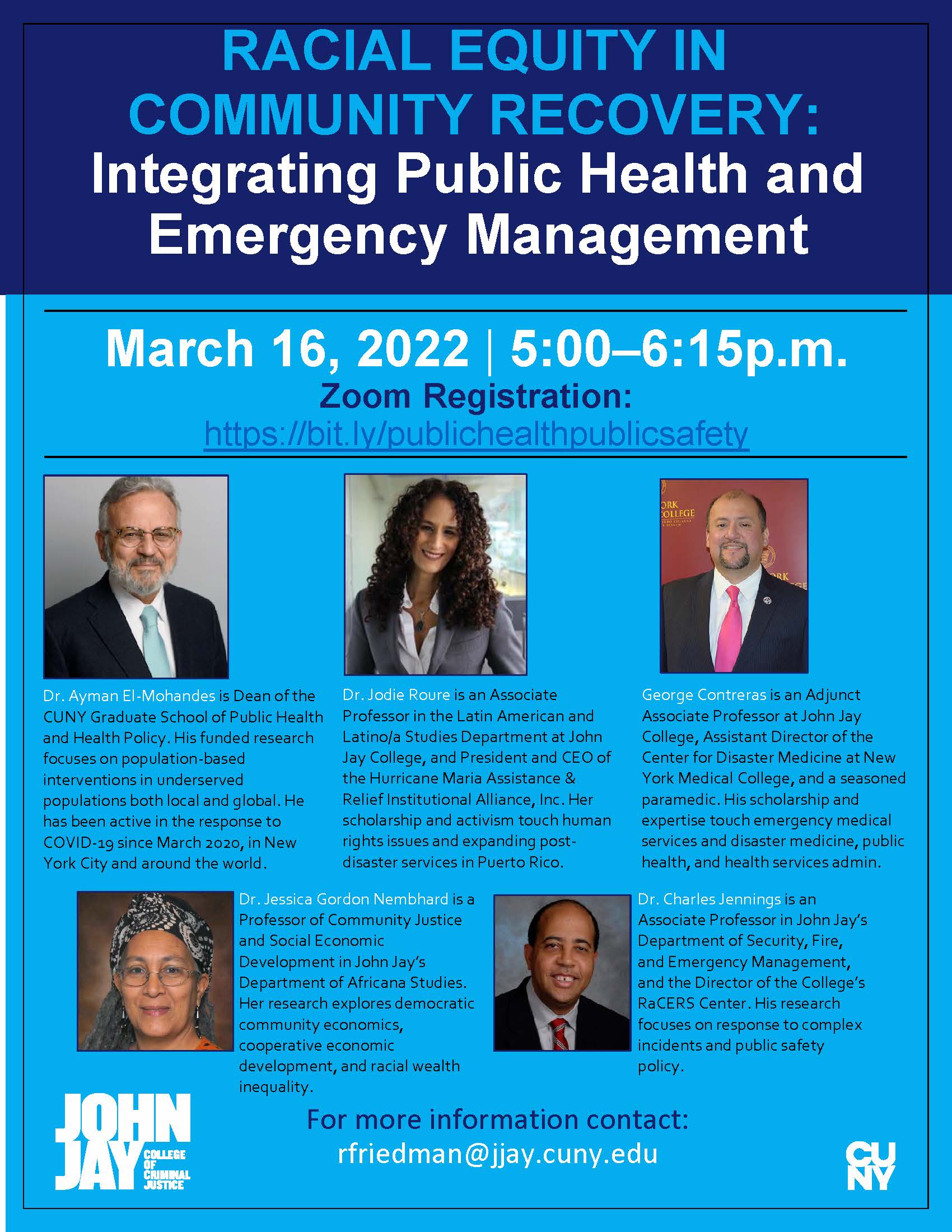 Event #6: Racial Equity in Community Recovery: Integrating Public Health and Emergency Management
Event #6: Racial Equity in Community Recovery: Integrating Public Health and Emergency Management
The sixth panel in the series, which took place on March 16, 2022, continued the theme of racial equity in disaster recovery. Panelists explored the overlapping roles of the institutions of public health and public safety in promoting equitable outcomes in post-disaster recovery, addressing the intersectional challenges faced by people of color and other marginalized communities. The conversation took special note of the particular context of post-COVID recovery. The participants were Dr. Ayman El-Mohandes (CUNY Graduate School of Public Health), Dr. Jodie Roure (John Jay College), and George Contreras (New York Medical College, John Jay College). The moderators were Dr. Jessica Gordon Nembhard and Dr. Charles Jennings (John Jay College). A full recording of the event is available at https://www.youtube.com/watch?v=4u9wUyjr5Sg&list=PL-B85PTQbdJj5UJhqiddjs1_9p90pZXTZ&index=6.
Resources:
- , 2020: COVID-19: A Barometer for Social Justice in New York City, American Journal of Public Health
- El-Mohandes, A., White, T.M., Wyka, K. et al. COVID-19 vaccine acceptance among adults in four major US metropolitan areas and nationwide. Sci Rep
- Roure, Jodie G. The Reemergence of Barriers During Crises and Natural Disasters: Gender-Based Violence Spikes Among Women and LGBTQ+ Persons During Confinement. Seton Hall Journal of Diplomacy and International Relations, pp 23-50, 2020.
- Jodie G. Roure, 2020 presentation: Children of Puerto Rico & COVID-19: At the Crossroads of Poverty & Disaster.
- Jodie G. Roure, Immigrant Women, Domestic Violence, and Hurricanes Irma and Maria in Puerto Rico: Compounding the Violence for the Most Vulnerable. The Georgetown Journal of Gender and the Law, 2019.
- Contreras GW, Burcescu B, Dang T, et al. Drawing parallels among past public health crises and COVID-19. Disaster Med Public Health Prep. doi: https://doi.org/10.1017/dmp.2021.202.

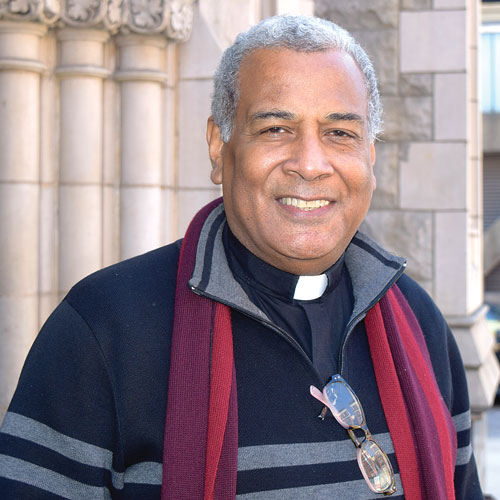 Dr. Luis Barrios has been a faculty member at John Jay College for 28 years, and at CUNY for even longer. During that time, he has worked on projects that blend social action and scholarship, involving gangs and gang violence, deportation, human rights, clinical work focused on trauma and abuse, and contemporary perspectives of life on the Dominican-Haitian border.
Dr. Luis Barrios has been a faculty member at John Jay College for 28 years, and at CUNY for even longer. During that time, he has worked on projects that blend social action and scholarship, involving gangs and gang violence, deportation, human rights, clinical work focused on trauma and abuse, and contemporary perspectives of life on the Dominican-Haitian border.


Recent Comments